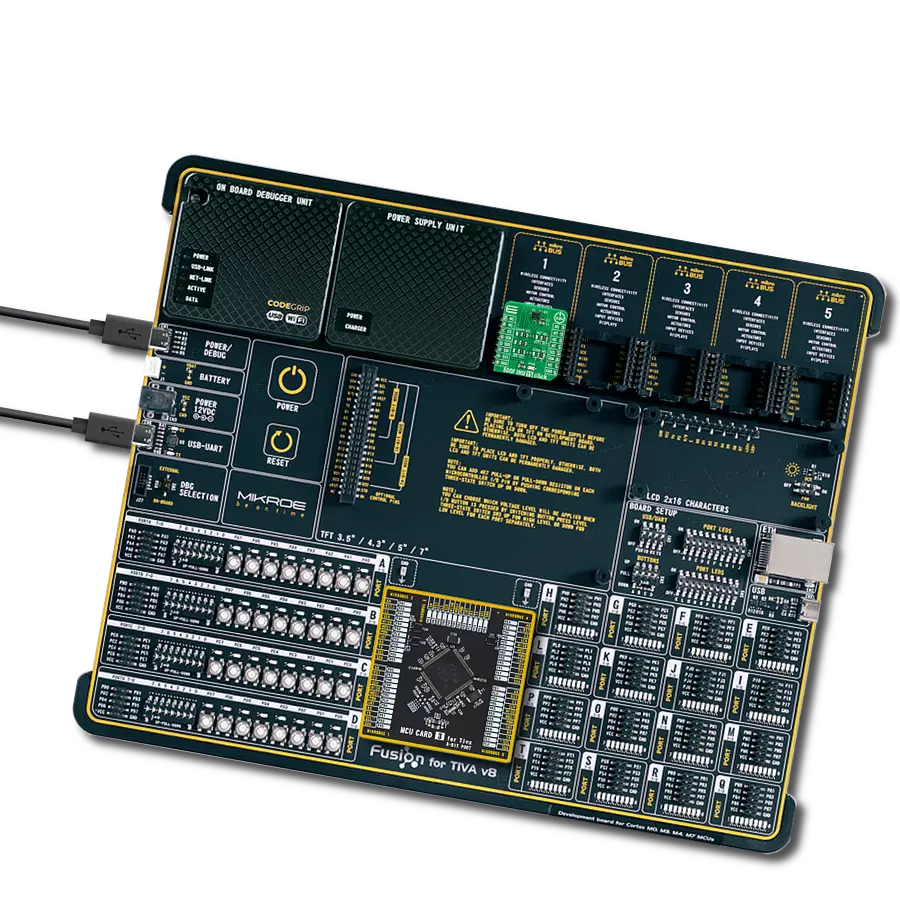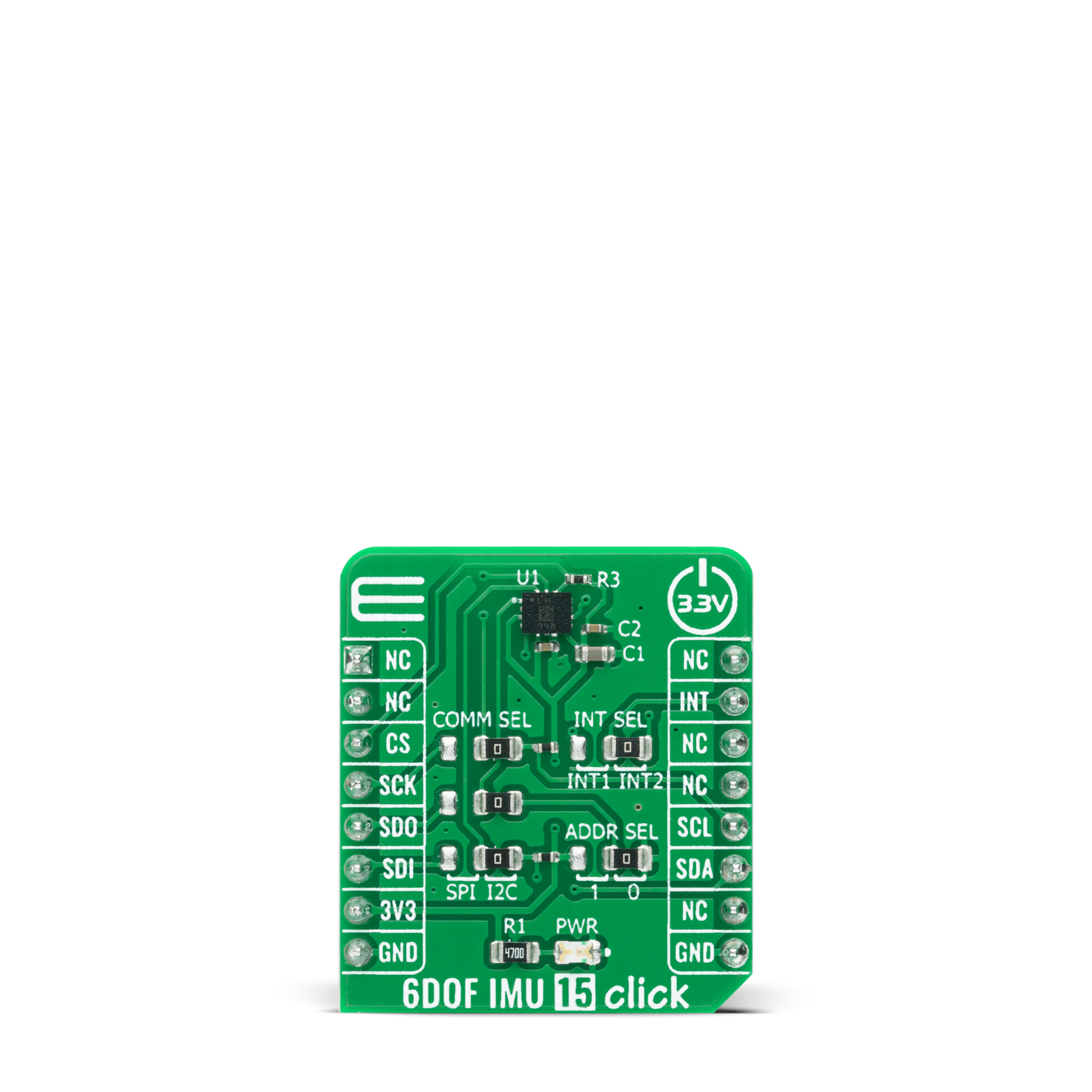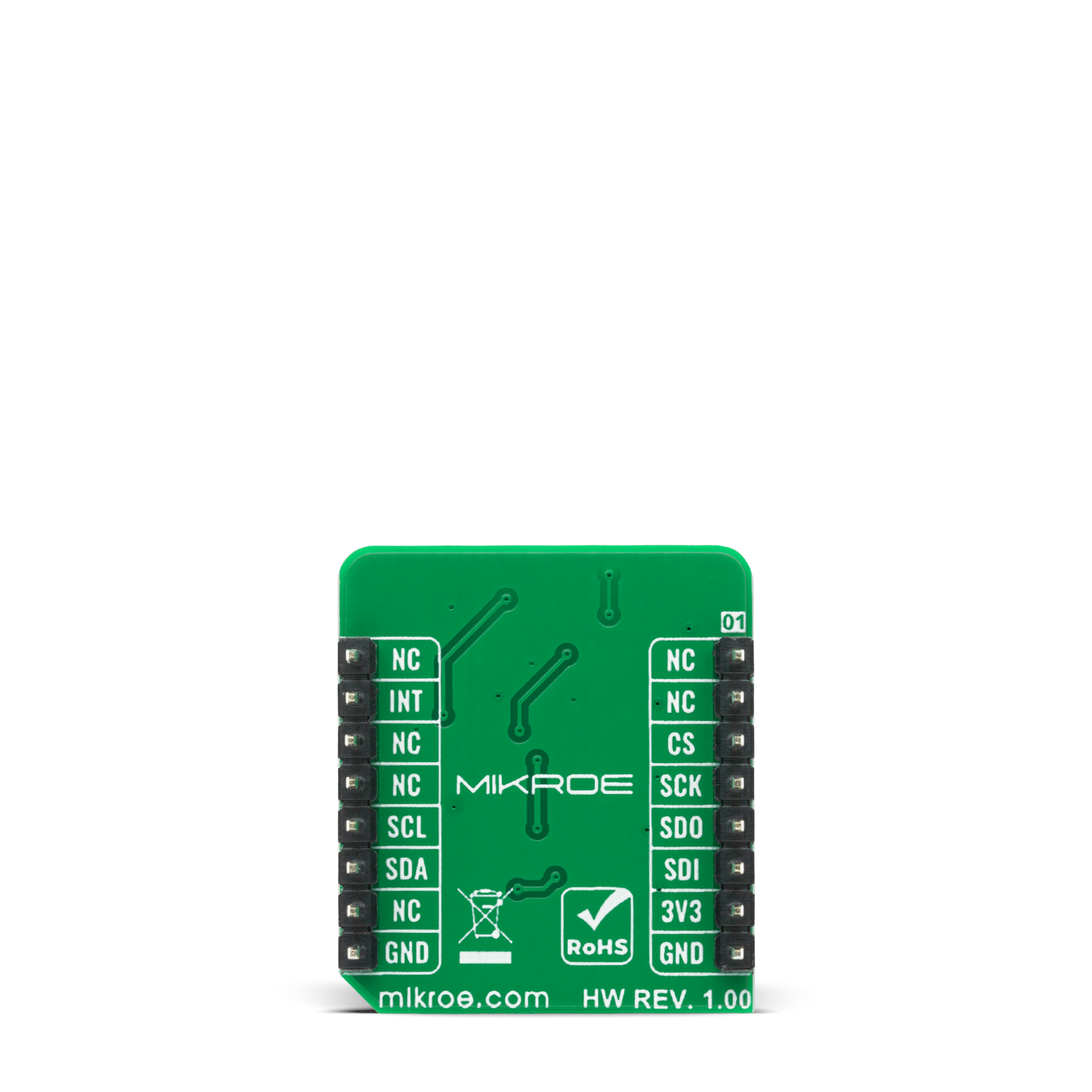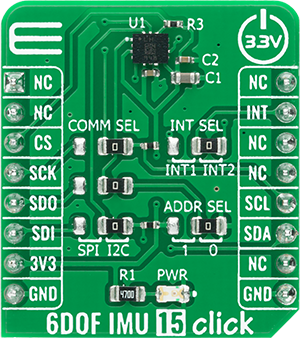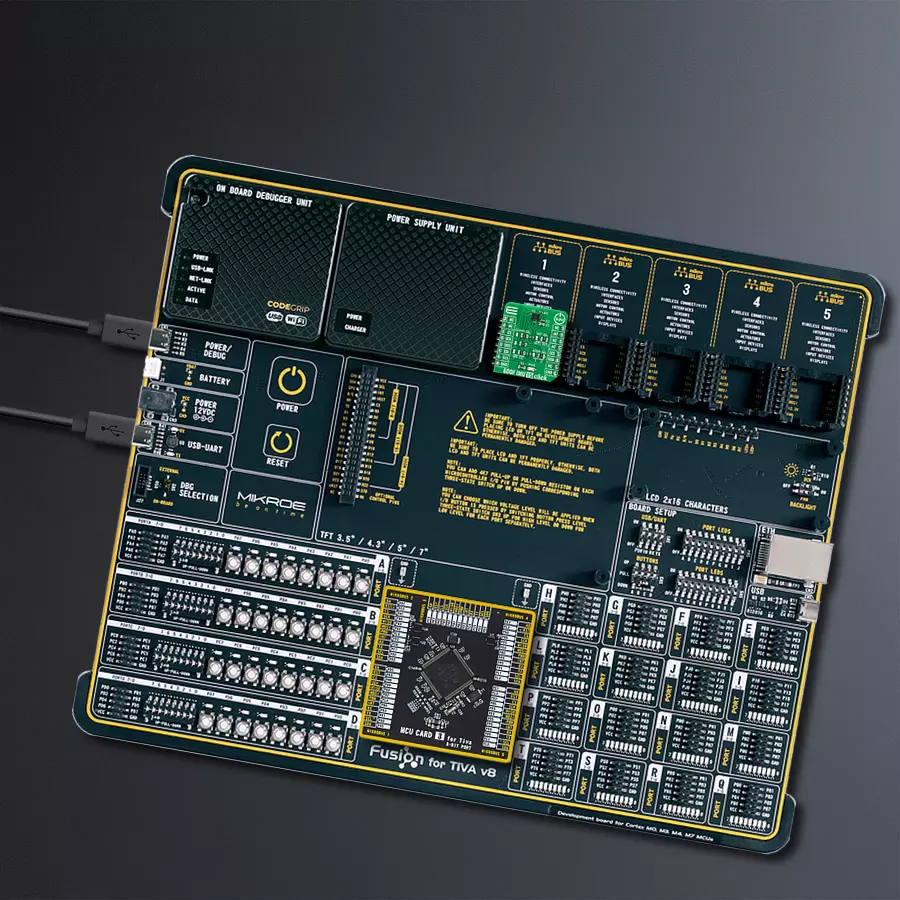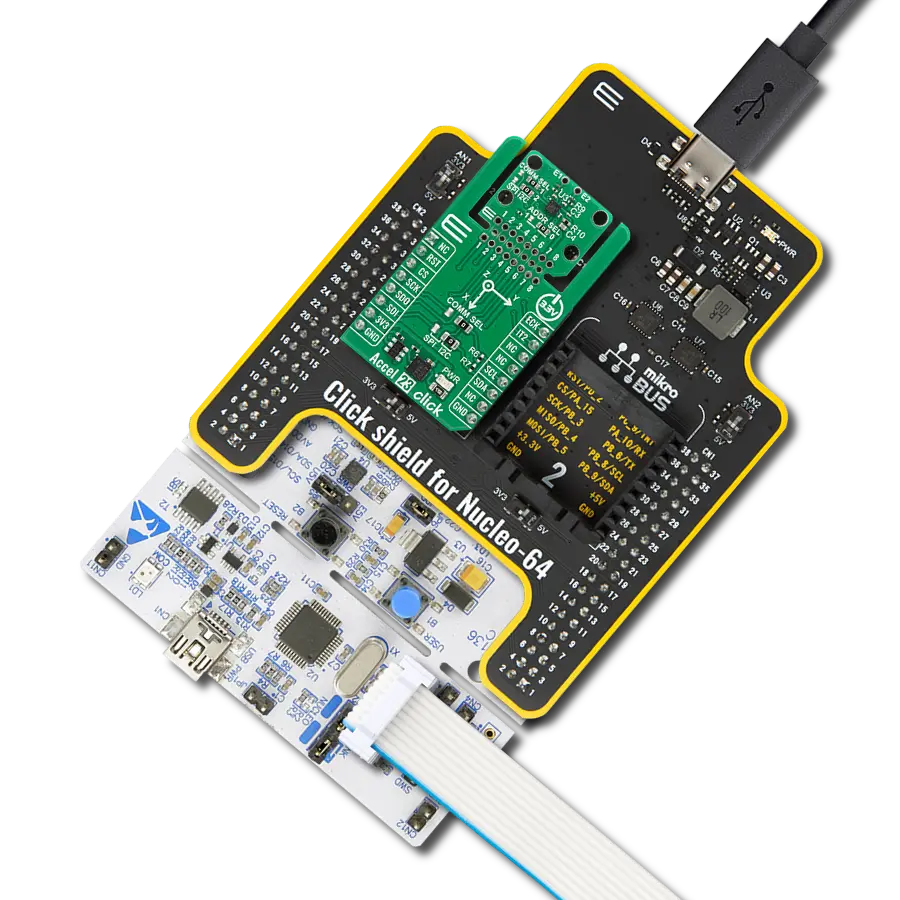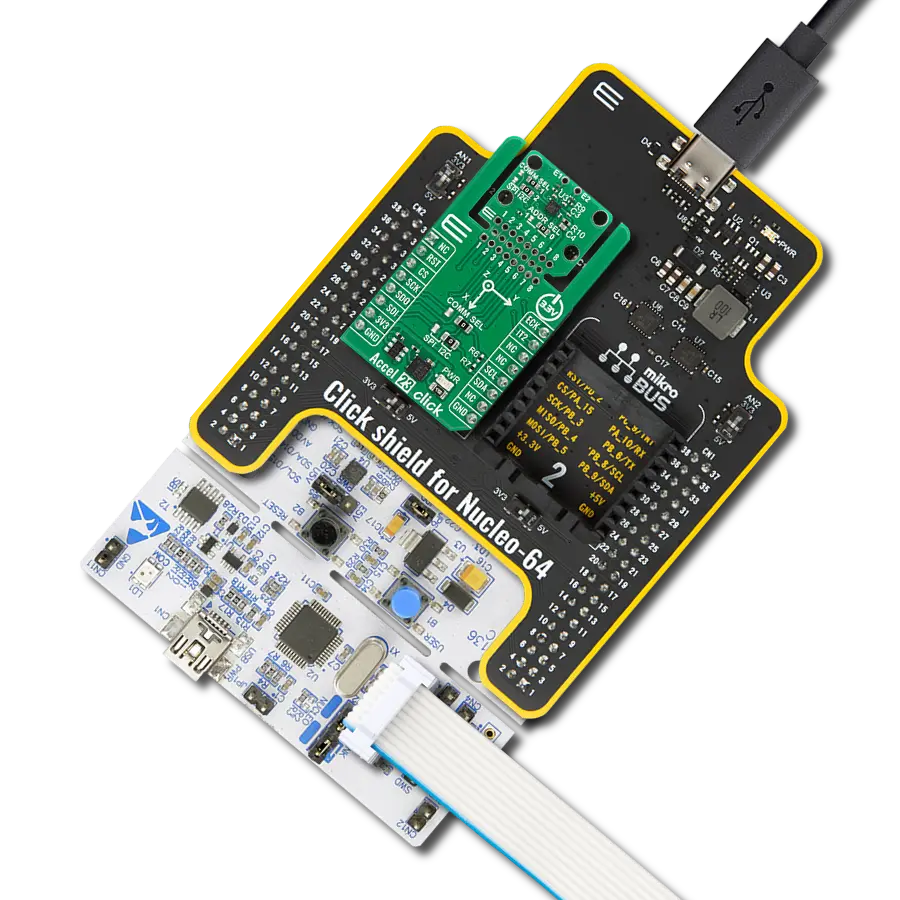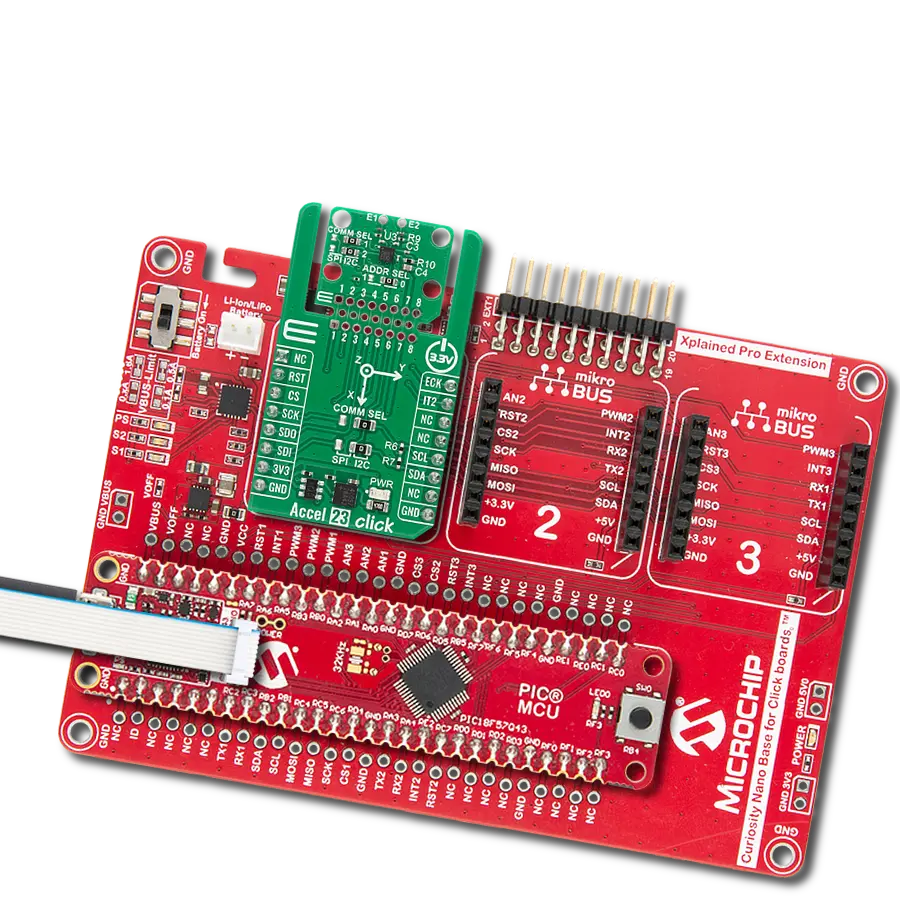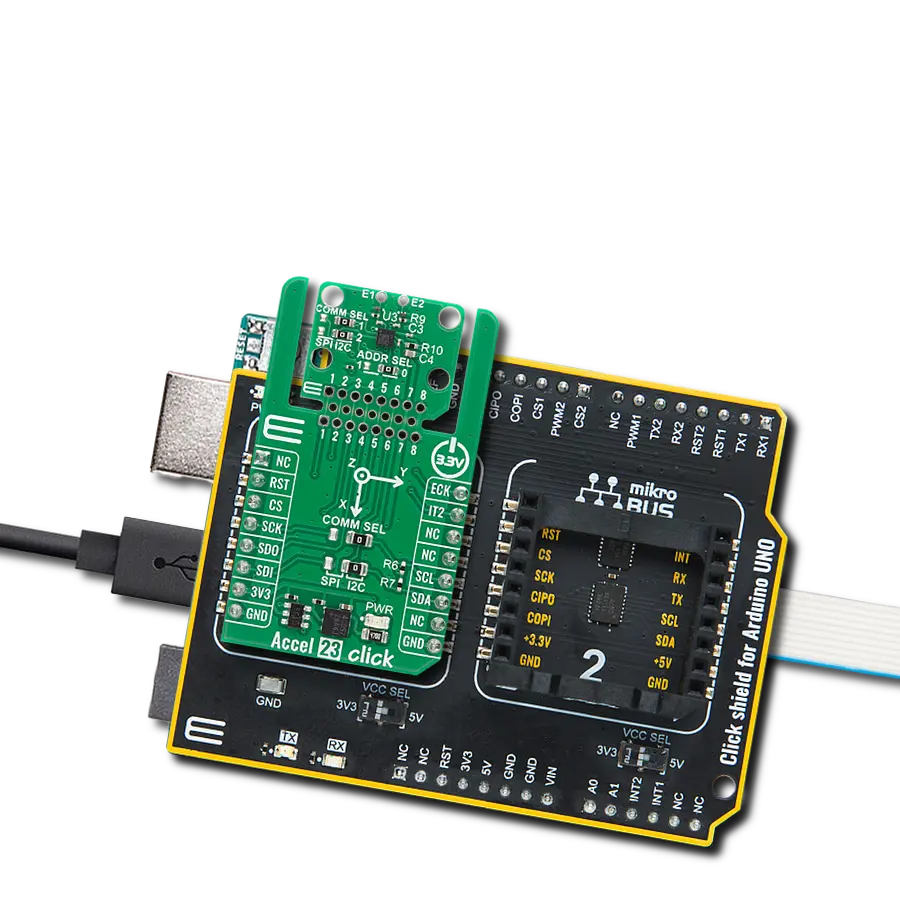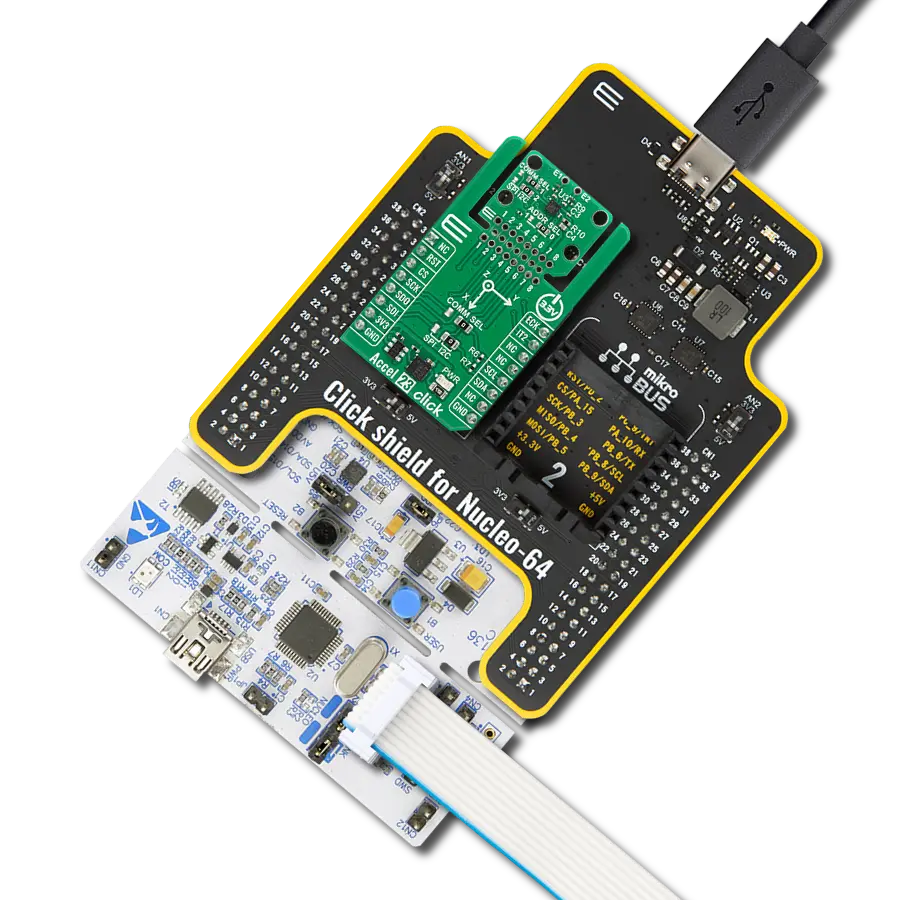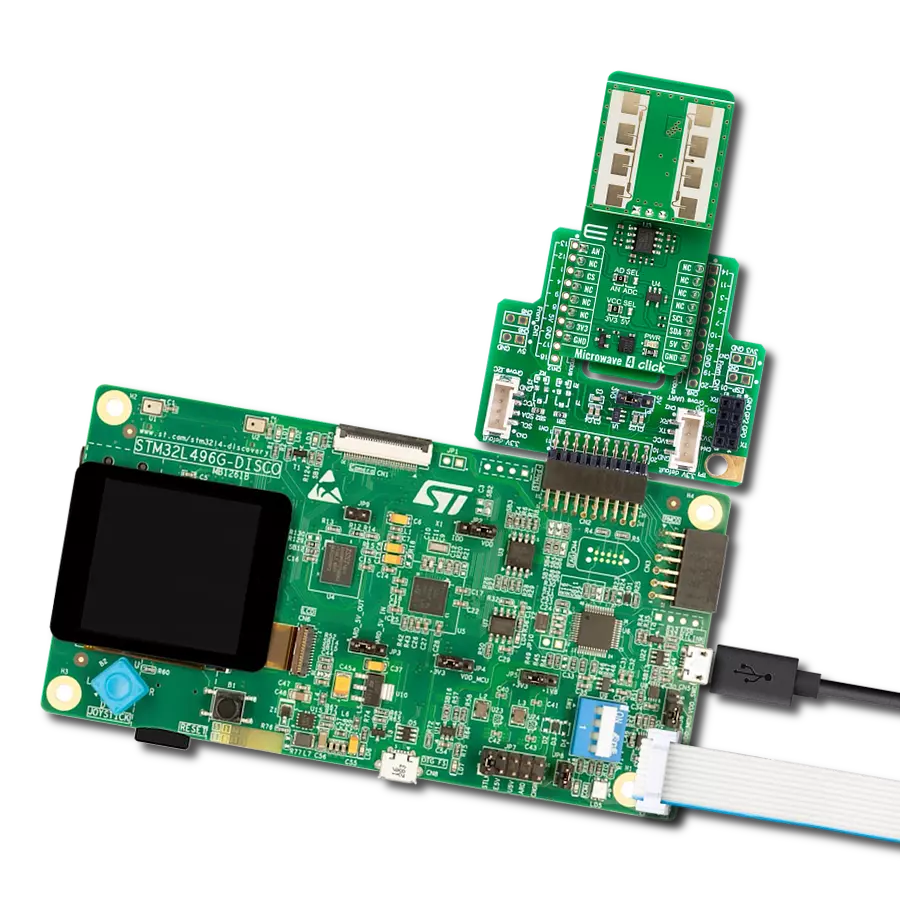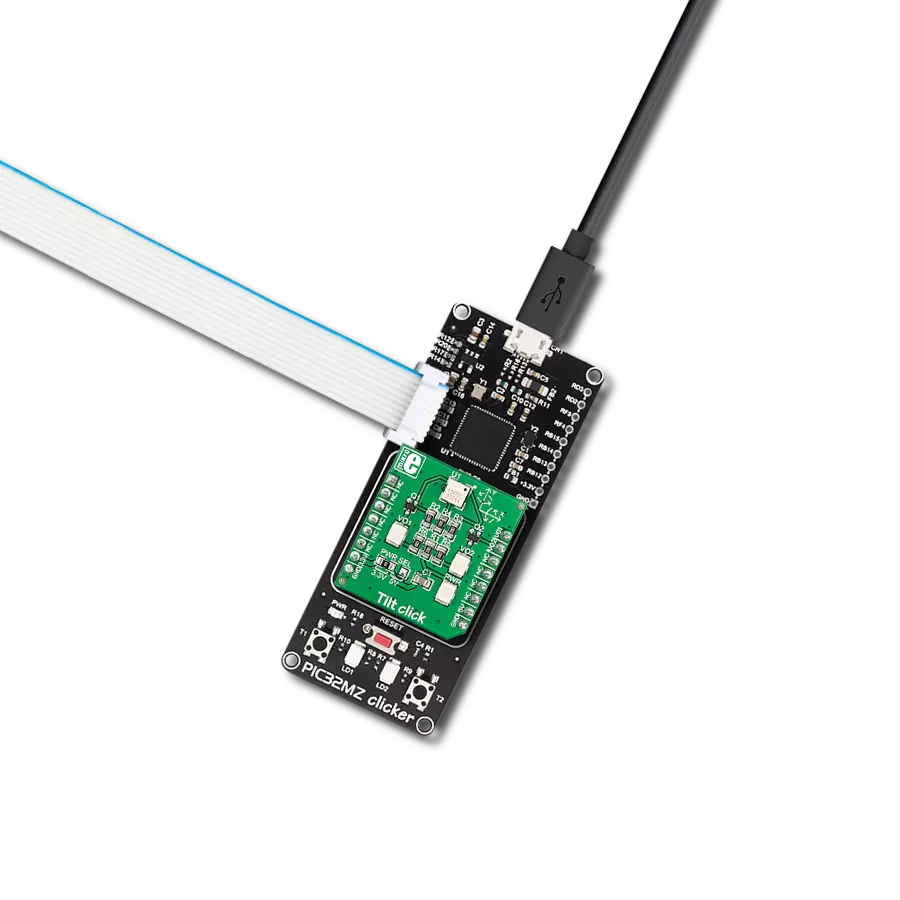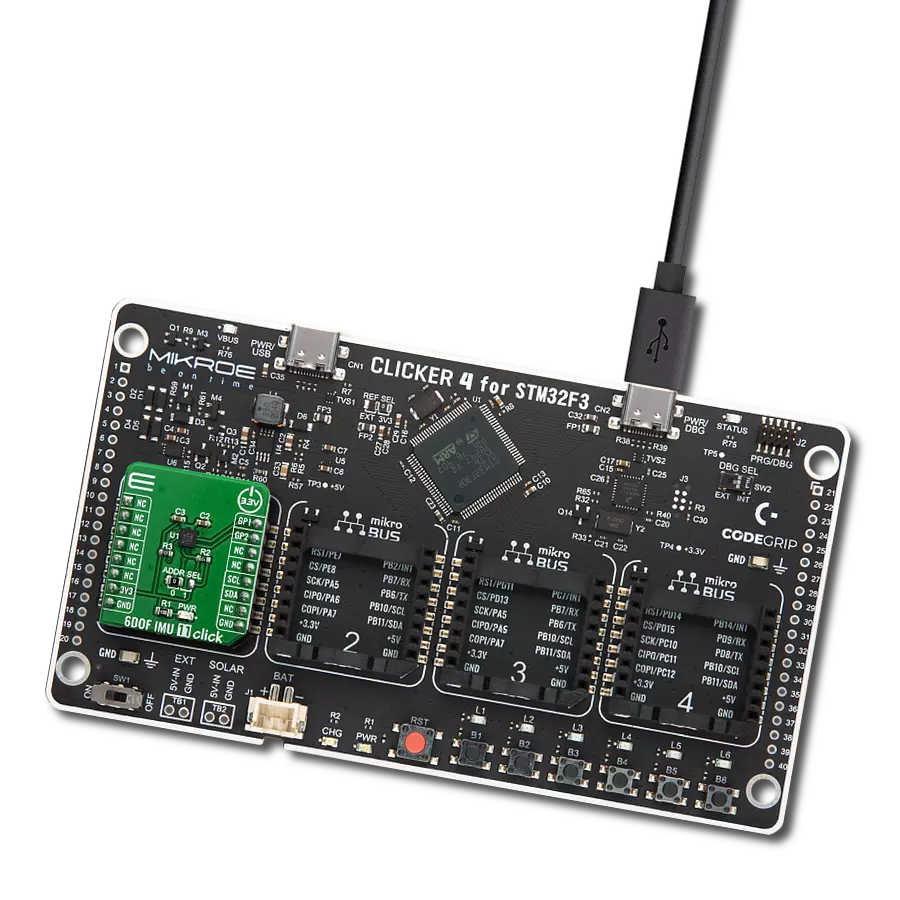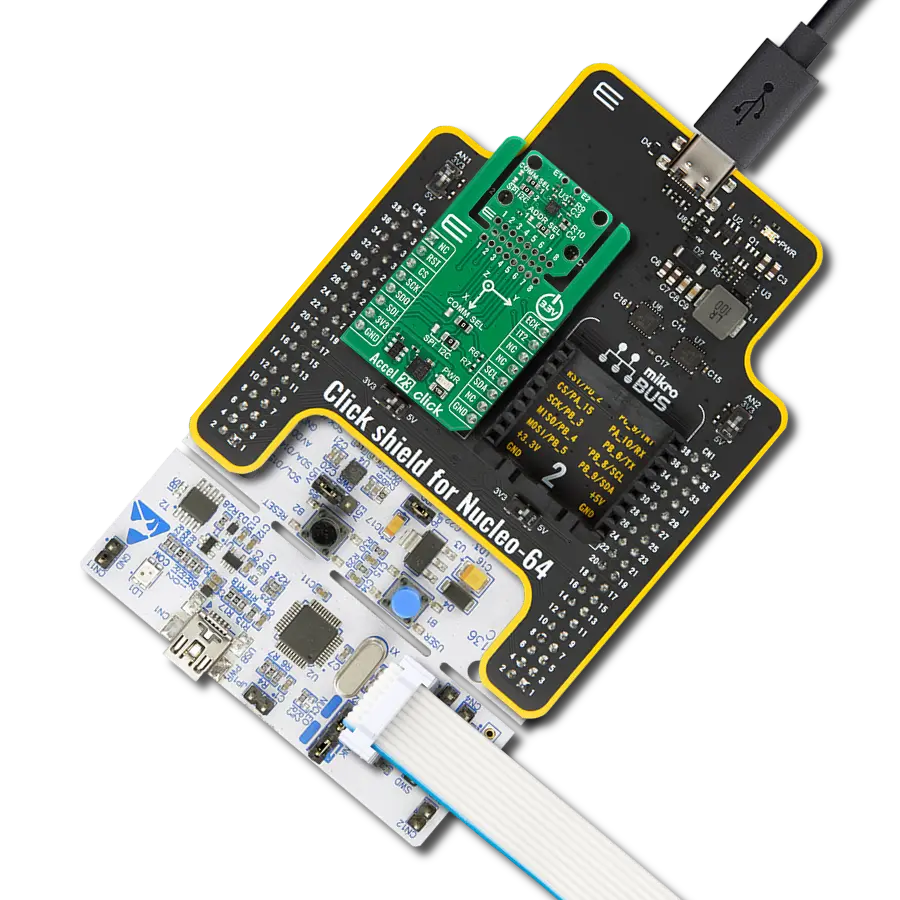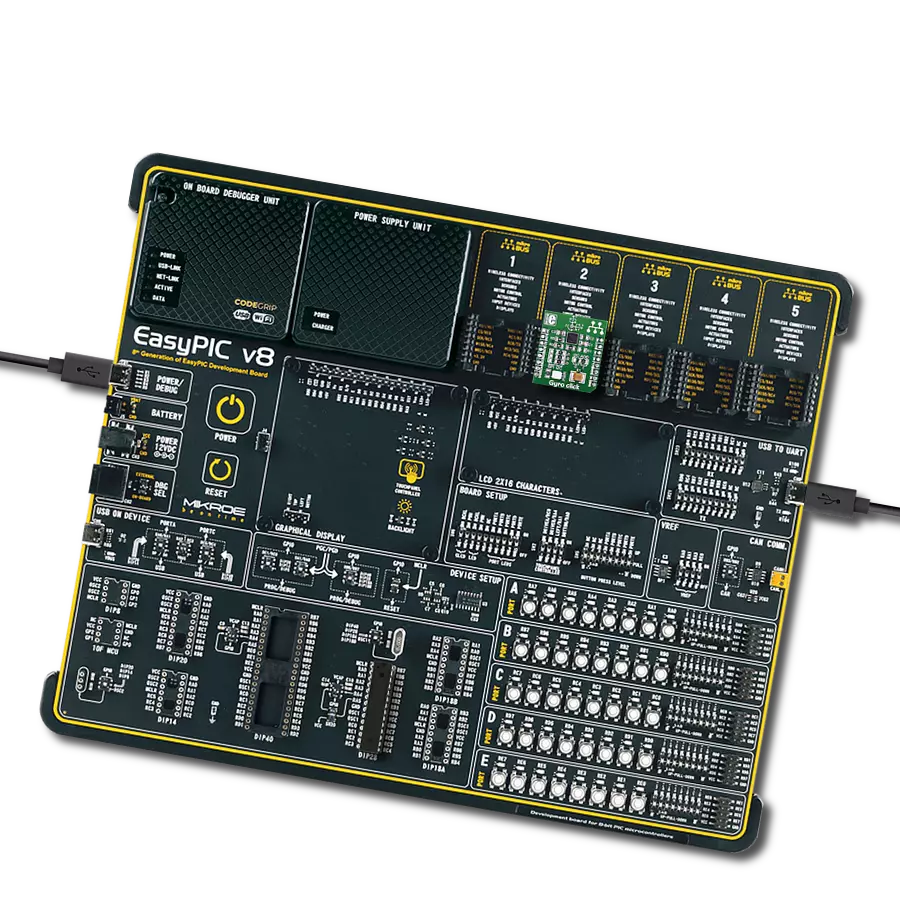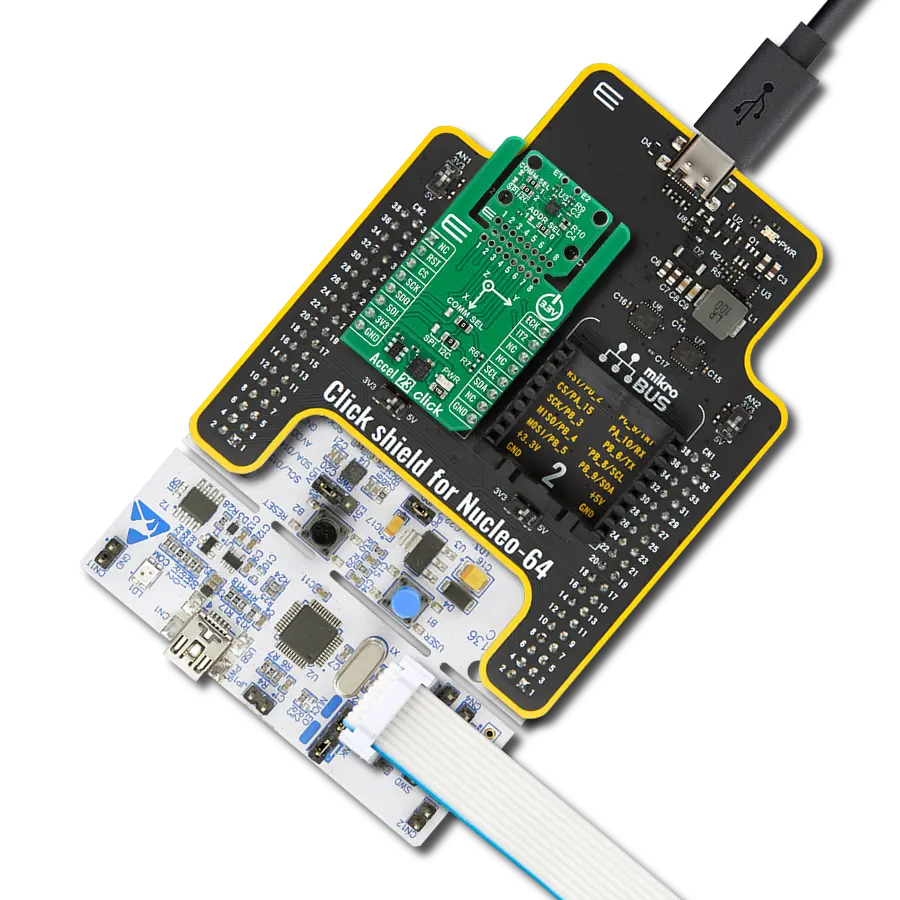At the intersection of innovation and technology lies our 6DoF motion tracking solution, guaranteeing precision in every move and revolutionizing the way we interact with the digital world
A
A
Hardware Overview
How does it work?
6DOF IMU 15 Click is based on the ASM330LHH, a system-in-package featuring a high-performance 3-axis digital accelerometer and 3-axis digital gyroscope from STMicroelectronics. It features a 3kB FIFO that can lower the traffic on the serial bus interface and reduce power consumption by allowing the system processor to burst read sensor data and then go into a low-power mode. It also features embedded compensation for high stability over temperature. The ASM330LHH has a configurable full-scale acceleration range of up to ±16 g and a wide angular rate range, from ±125 dps up to ±4000 dps, that enables its usage in a broad range of applications. The ASM330LHH has a programmable interrupt system that can generate an interrupt signal with two available pins. One of these two interrupt pins can be selected using the
INT SEL jumper (JP4), which is routed to the INT pin of the mikroBUS™ socket. The event-detection smart programmable interrupts enable efficient and reliable motion-activated functions, implementing hardware recognition of free-fall events, 6D orientation, activity or inactivity, and wake-up events. 6DOF IMU 15 Click allows for both I2C and SPI interfaces with a maximum frequency of 400kHz for I2C and 10MHz for SPI communication. The selection can be done by positioning SMD jumpers labeled COMM SEL to an appropriate position. Note that all the jumpers must be placed on the same side, or the Click board™ may become unresponsive. While the I2C interface is selected, the ASM330LHH allows the choice of the least significant bit (LSB) of its I2C slave address. This can be done by using the SMD
jumper labeled as ADDR SEL. A FIFO buffer helps to reduce the processing load further, offering temporary storage for the output data. The ASM330LHH contains a FIFO of size 3kbytes accessible via the serial interface. The FIFO configuration register determines which data is written into the FIFO. Possible choices include gyro data, accelerometer data, Timestamp, and temperature readings. This Click board™ can be operated only with a 3.3V logic voltage level. The board must perform appropriate logic voltage level conversion before using MCUs with different logic levels. Also, it comes equipped with a library containing functions and an example code that can be used as a reference for further development.
Features overview
Development board
Fusion for TIVA v8 is a development board specially designed for the needs of rapid development of embedded applications. It supports a wide range of microcontrollers, such as different 32-bit ARM® Cortex®-M based MCUs from Texas Instruments, regardless of their number of pins, and a broad set of unique functions, such as the first-ever embedded debugger/programmer over a WiFi network. The development board is well organized and designed so that the end-user has all the necessary elements, such as switches, buttons, indicators, connectors, and others, in one place. Thanks to innovative manufacturing technology, Fusion for TIVA v8 provides a fluid and immersive working experience, allowing access
anywhere and under any circumstances at any time. Each part of the Fusion for TIVA v8 development board contains the components necessary for the most efficient operation of the same board. An advanced integrated CODEGRIP programmer/debugger module offers many valuable programming/debugging options, including support for JTAG, SWD, and SWO Trace (Single Wire Output)), and seamless integration with the Mikroe software environment. Besides, it also includes a clean and regulated power supply module for the development board. It can use a wide range of external power sources, including a battery, an external 12V power supply, and a power source via the USB Type-C (USB-C) connector.
Communication options such as USB-UART, USB HOST/DEVICE, CAN (on the MCU card, if supported), and Ethernet is also included. In addition, it also has the well-established mikroBUS™ standard, a standardized socket for the MCU card (SiBRAIN standard), and two display options for the TFT board line of products and character-based LCD. Fusion for TIVA v8 is an integral part of the Mikroe ecosystem for rapid development. Natively supported by Mikroe software tools, it covers many aspects of prototyping and development thanks to a considerable number of different Click boards™ (over a thousand boards), the number of which is growing every day.
Microcontroller Overview
MCU Card / MCU
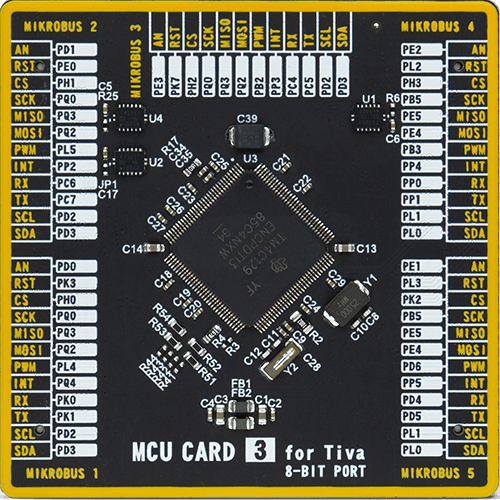
Type
8th Generation
Architecture
ARM Cortex-M4
MCU Memory (KB)
1024
Silicon Vendor
Texas Instruments
Pin count
128
RAM (Bytes)
262144
Used MCU Pins
mikroBUS™ mapper
Take a closer look
Click board™ Schematic

Step by step
Project assembly
Track your results in real time
Application Output
1. Application Output - In Debug mode, the 'Application Output' window enables real-time data monitoring, offering direct insight into execution results. Ensure proper data display by configuring the environment correctly using the provided tutorial.

2. UART Terminal - Use the UART Terminal to monitor data transmission via a USB to UART converter, allowing direct communication between the Click board™ and your development system. Configure the baud rate and other serial settings according to your project's requirements to ensure proper functionality. For step-by-step setup instructions, refer to the provided tutorial.

3. Plot Output - The Plot feature offers a powerful way to visualize real-time sensor data, enabling trend analysis, debugging, and comparison of multiple data points. To set it up correctly, follow the provided tutorial, which includes a step-by-step example of using the Plot feature to display Click board™ readings. To use the Plot feature in your code, use the function: plot(*insert_graph_name*, variable_name);. This is a general format, and it is up to the user to replace 'insert_graph_name' with the actual graph name and 'variable_name' with the parameter to be displayed.

Software Support
Library Description
This library contains API for 6DOF IMU 15 Click driver.
Key functions:
c6dofimu15_device_conf_set- Enable the proper device configuration functionc6dofimu15_accel_data_rate- Accelerometer data rate selection functionc6dofimu15_accel_full_scale- Accelerometer full-scale selection function
Open Source
Code example
The complete application code and a ready-to-use project are available through the NECTO Studio Package Manager for direct installation in the NECTO Studio. The application code can also be found on the MIKROE GitHub account.
/*!
* \file
* \brief 6DofImu15 Click example
*
* # Description
* This example demonstrates the use of 6DOF IMU 15 Click board.
*
* The demo application is composed of two sections :
*
* ## Application Init
* Initializes the driver, checks the communication and sets the device
* default configuration.
*
* ## Application Task
* Measures acceleration and gyroscope data and displays the results on USB UART each second.
*
* \author MikroE Team
*
*/
// ------------------------------------------------------------------- INCLUDES
#include "board.h"
#include "log.h"
#include "c6dofimu15.h"
// ------------------------------------------------------------------ VARIABLES
static c6dofimu15_t c6dofimu15;
static log_t logger;
// ------------------------------------------------------ APPLICATION FUNCTIONS
void application_init ( void )
{
log_cfg_t log_cfg;
c6dofimu15_cfg_t cfg;
/**
* Logger initialization.
* Default baud rate: 115200
* Default log level: LOG_LEVEL_DEBUG
* @note If USB_UART_RX and USB_UART_TX
* are defined as HAL_PIN_NC, you will
* need to define them manually for log to work.
* See @b LOG_MAP_USB_UART macro definition for detailed explanation.
*/
LOG_MAP_USB_UART( log_cfg );
log_init( &logger, &log_cfg );
log_info( &logger, "---- Application Init ----" );
// Click initialization.
c6dofimu15_cfg_setup( &cfg );
C6DOFIMU15_MAP_MIKROBUS( cfg, MIKROBUS_1 );
c6dofimu15_init( &c6dofimu15, &cfg );
Delay_ms ( 100 );
if ( c6dofimu15_who_im_i( &c6dofimu15 ) )
{
log_printf( &logger, "---------------------- \r\n" );
log_printf( &logger, " 6DOF IMU 15 Click \r\n" );
log_printf( &logger, "---------------------- \r\n" );
}
else
{
log_printf( &logger, "---------------------- \r\n" );
log_printf( &logger, " FATAL ERROR!! \r\n" );
log_printf( &logger, "---------------------- \r\n" );
for ( ; ; );
}
c6dofimu15_default_cfg( &c6dofimu15 );
log_printf( &logger, " ---Initialised--- \r\n" );
log_printf( &logger, "---------------------- \r\n" );
Delay_ms ( 100 );
}
void application_task ( void )
{
float x_accel;
float y_accel;
float z_accel;
float x_gyro;
float y_gyro;
float z_gyro;
c6dofimu15_acceleration_rate( &c6dofimu15, &x_accel, &y_accel, &z_accel );
c6dofimu15_angular_rate( &c6dofimu15, &x_gyro, &y_gyro, &z_gyro );
log_printf( &logger, " Accel X: %.2f \t Gyro X: %.2f\r\n", x_accel, x_gyro );
log_printf( &logger, " Accel Y: %.2f \t Gyro Y: %.2f\r\n", y_accel, y_gyro );
log_printf( &logger, " Accel Z: %.2f \t Gyro Z: %.2f\r\n", z_accel, z_gyro );
log_printf( &logger, "----------------------------------\r\n");
Delay_ms ( 1000 );
}
int main ( void )
{
/* Do not remove this line or clock might not be set correctly. */
#ifdef PREINIT_SUPPORTED
preinit();
#endif
application_init( );
for ( ; ; )
{
application_task( );
}
return 0;
}
// ------------------------------------------------------------------------ END
Additional Support
Resources
Category:Motion
